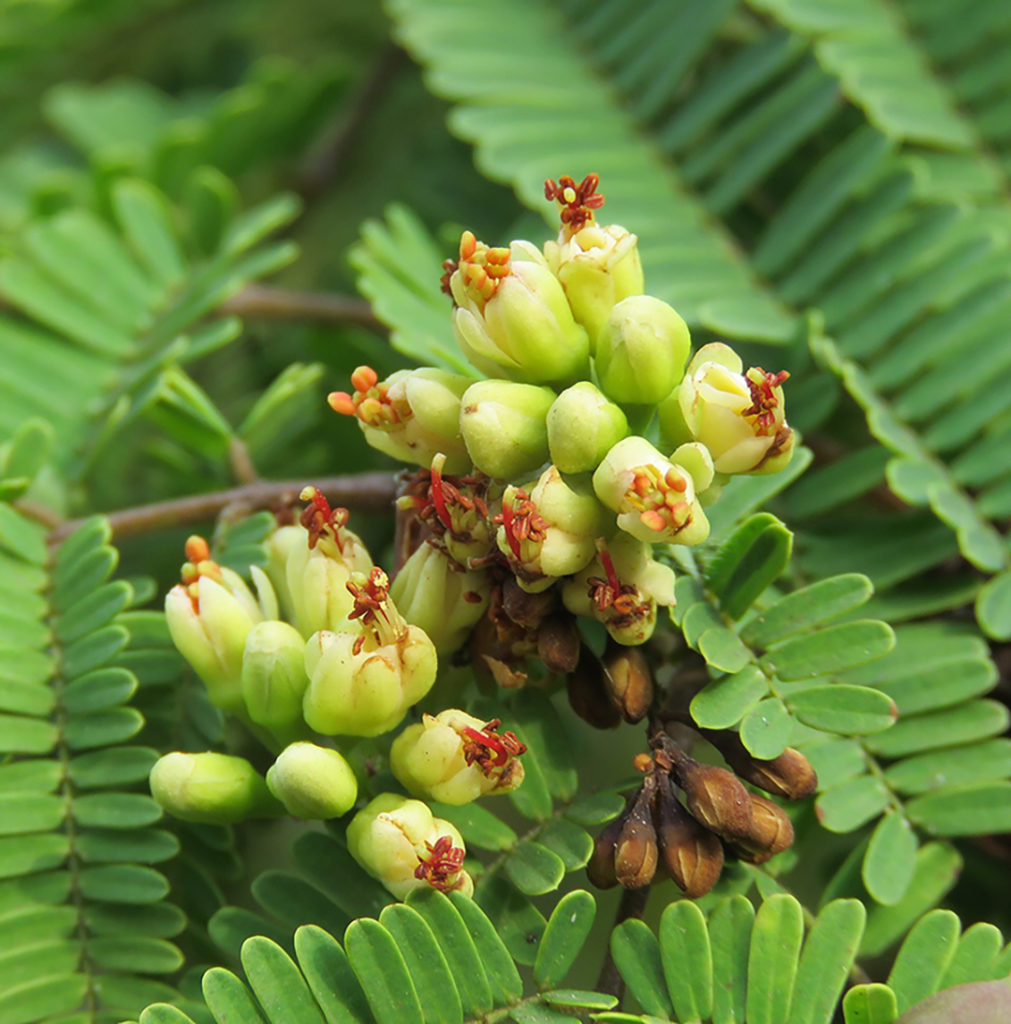
Curaçao
Divi-Divi
Caesalpinia coriaria (formerly Libidibia coriaria)

General Description / Cultural Significance
Curaçao is an island country of the lesser Antilles in the southern Caribbean. Its semi-arid climate supports a different tropical vegetation than found on most Caribbean islands. This includes the characteristic windswept divi-divi, or Caesalpinia coriaria, a slow-growing evergreen shrub that can grow up to 30 feet tall and spreads a wide-reaching canopy. Almost all divi-divis, the country’s national tree, naturally lean to the west, creating a permanent living monument to the constant trade winds.
The small yellow flowers produce a lovely fragrance, and their nectar is a favorite of honeybees. Tannins from divi-divi pods have been used in leather production for centuries, and the pods produce a black or blue dye used to color natural fabrics. The dark brown hard wood produces a red dye. Medically, the people in Curaçao use the plant to fight staph infections, and in recent years it was scientifically confirmed to possess antibacterial activities.
Climate Change/Conservation Status
There are terrestrial and marine impacts from climate change in the Caribbean regions, and extreme vulnerability is predicted for the small island of Curaçao. The average temperatures in the Antilles have risen steeply over the last four decades. In that same time, the surrounding coral reefs have rapidly degraded by 50%. NOAA Coral Reef Watch has developed Heat Stress Gauges to monitor coral bleaching events.
The island’s meteorological department says they have progressively had more hot days and fewer cold nights. Curaçao has been hit hard by more frequent and violent tropical hurricanes and their marine and terrestrial ecosystems are vulnerable to higher ocean temperatures and acidification. Mangroves and sea grass beds are under threat from increasing salinity levels.
As of 2019, assessments by the IUCN indicated the divi-divi tree was not considered threatened. However, its habitat is moist lowlands so in the future it could be vulnerable to saltwater infiltration.
Alternate Names
Guaracabuya
Guatapana
Nacascol
Watapana tree
Sources
Debrot, A. O., & Bugter, R., 2010. Climate change effects on the biodiversity of the BES islands. Alterra Wageningen UR. ISSN: 1556-7197
DNCA, 2016. Climate change impacts within the Dutch Caribbean. Dutch Caribbean Nature Alliance. [website]
Jansen, P.C.M., 2015. Caesalpinia coriaria (Jacq.). Plant Resources of Tropical Africa. [website]
Robinson, S., 2018. Climate change adaptation in small island developing states: Insights and lessons from a meta-paradigmatic study. Environmental Science & Policy, 85, pp.172-181. DOI: 10.1016/j.envsci.2018.03.030
Sookram, S., 2011. An Assessment of the Economic Impact of Climate Change on the Tourism Sector in Curaçao. Economic Commission for Latin America and the Caribbean. [website]

